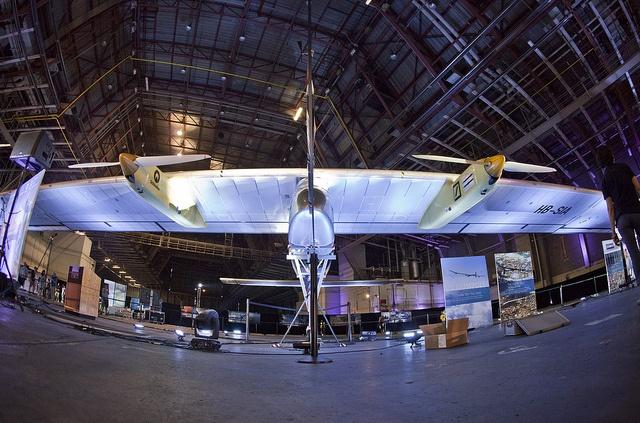
The solar power industry broke all kinds of records in 2016. For the first time in history, solar dominated the market when it came to new power generation.
States like California, Arizona and North Carolina blazed, despite efforts by at least one state to reduce net-metering payments to homeowners who invested in rooftop solar. In Southern California, the country's biggest market, rooftop sales dropped toward the end of the year, but the dip hasn't curbed the innovation that has been so much a part of the solar industry's success in recent years.
From "smart" clothing keeps us connected, to tools that provide safer cooking methods for low-income families, solar has literally helped to change our view of the world and and our options. It challenged our concept of opportunity, proving that a person doesn't have to be rich to benefit from technology. And it's made it possible for those in the world's remotest regions to attain a better quality of life, thanks to a little bit of sun.
1. Solar-powered 'kitchen'
There have been many attempts to improve cooking options for families in impoverished regions that don't have access to electricity, from better fuel sources to increased education about the dangers of cooking with wood or makeshift fires inside the home. The introduction of the solar stove in sub-Saharan Africa takes advantage of the region's plentiful sun, while dramatically reducing the many risks inherent with traditional open-fire cooking.
In recent years, nonprofit organizations like Lift Up Africa have helped to ensure that solar-powered cookers were available to families without cost, making the transition to solar power all the easier.
2. Nanotech clothing
We now have caps and hats that allow us to answer phone calls or listen to music by tapping our ears, so it makes sense there would be clothing to keep that phone powered up at all times. But what about a jacket that can take a photo for you?
Earlier this year, the University of Central Florida joined forces with Massachusetts Institute of Technology in a federally-backed project to research textiles that can collect solar energy and measure environmental conditions like light, sound and temperature.
The $75 million project is just the latest in solar-powered smart clothing. Since it has both medical and military implications, the technology has the backing of the feds. But solar-powered clothing also has great commercial appeal these days as well, offering even more connectivity in our techno-savvy world.
3. Sun-powered wheelchair
The solar-powered wheelchair has been around for a few years. Still, the concept points toward an increasing trend to think outside the conventional box when it comes to accessibility.
Designed by students at the University of Virginia for a 2013 tech competition highlighting Cerebral Palsy Day, the chair can run for up to 4.5 hours nonstop at 5 miles per hour or indefinitely at 1 mph. It also comes with a nifty roof (where the panel are located), providing shade for those who may have an intolerance to sun (such as those with autoimmune conditions like Lupus). It also sported docking ports for cell phones.
The chair was designed for the competition Change My Life in 1 Minute, which pretty much sums up the potential impact that an invention like this can bring.
4. Plug-free laptop power
There were several Northwest power outages last year, in which I could have used a laptop that didn't need a local power company to keep going. But a laptop that runs on the sun has huge implications for communities where the grid doesn't exist, as well.
According to the National Center for Education Statistics, in 2013 71 percent of U.S.population aged 3 and older used the Internet. Imagine what a solar-power laptop could mean for communities that have no access to electricity to power up a computer?
5. Flying courtesy of the sun
Flight has been powering our imagination for centuries. From the days of the Wright Brothers (and much earlier, in fact), the concept of flying across the world has been empowering technology and changing our perception of geographic boundaries.
The Solar Impulse's bold flight from France to Belgium in 2011 was just the start of solar flight and was followed up with further exploration in 2015. This year, the first round-the-world flight proved that solar energy can be harnessed to replace carbon fuels. The use of solar in boats, planes, cars and even spaceships offer yet another way for us to extend our horizons and hopefully, build upon even better technology.
Flickr/Anthony Quintano
Jan Lee is a former news editor and award-winning editorial writer whose non-fiction and fiction have been published in the U.S., Canada, Mexico, the U.K. and Australia. Her articles and posts can be found on TriplePundit, JustMeans, and her blog, The Multicultural Jew, as well as other publications. She currently splits her residence between the city of Vancouver, British Columbia and the rural farmlands of Idaho.














